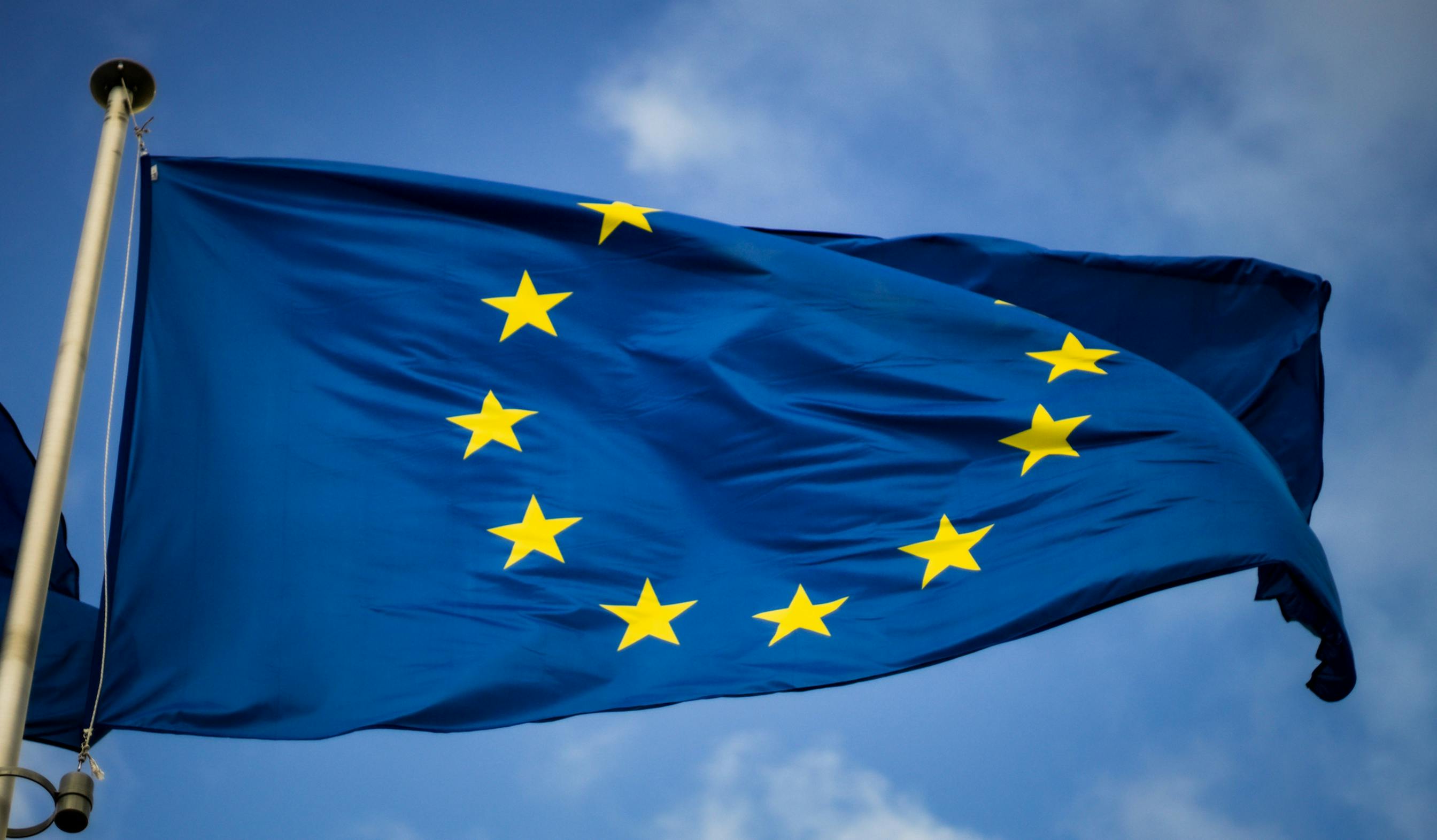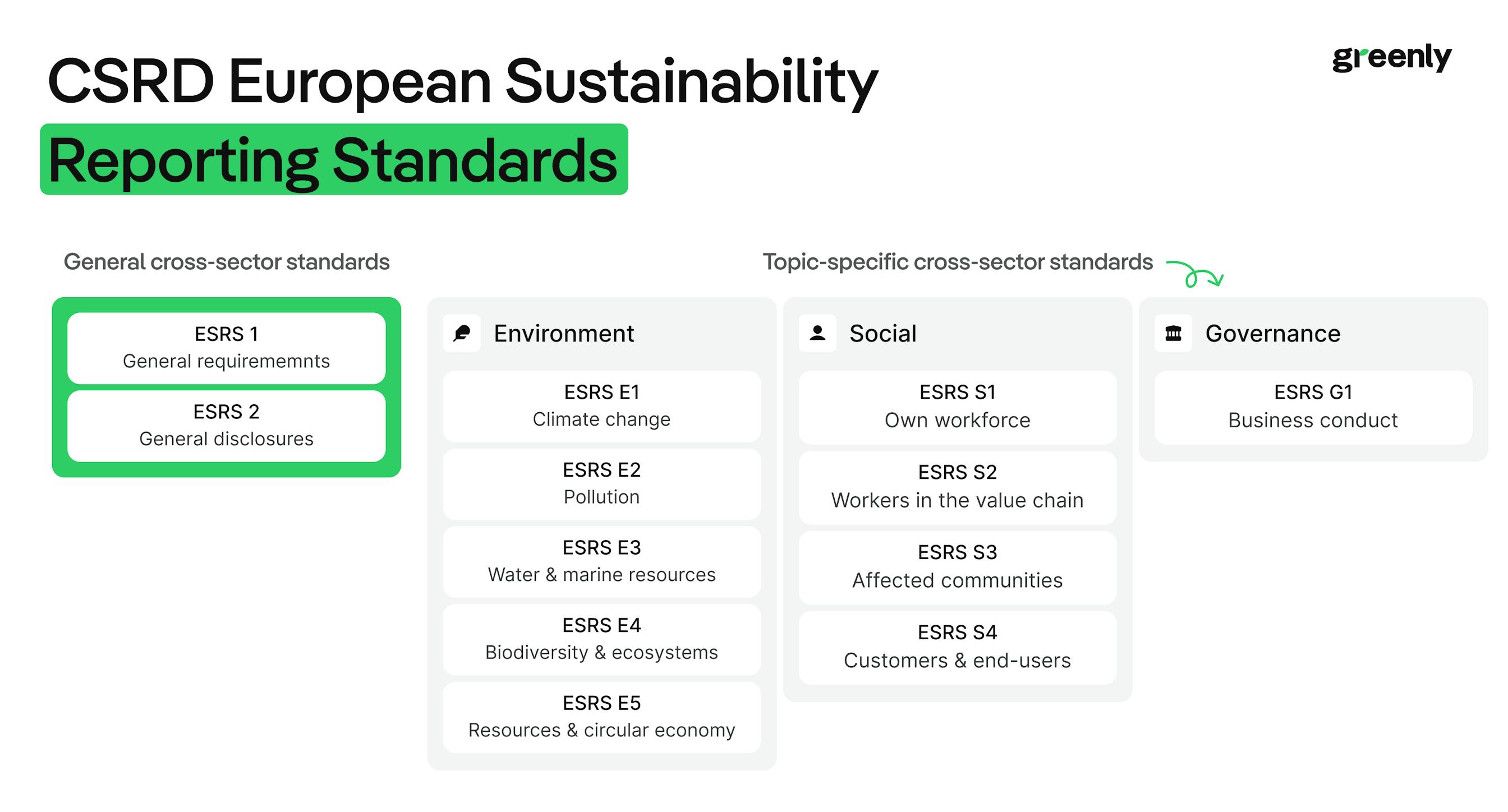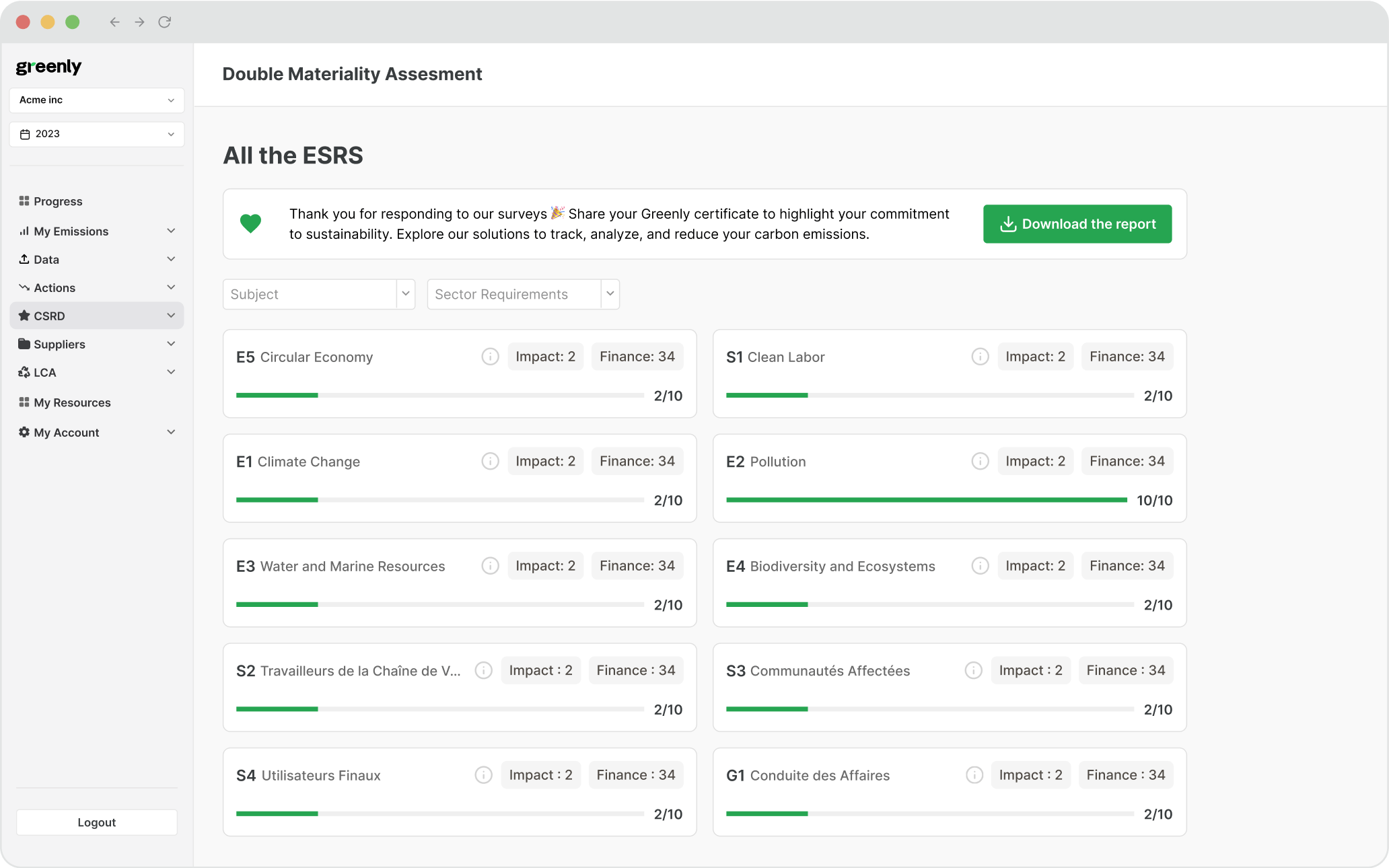
California Climate Accountability Package: SB253, SB261, & SB252
What is the California Climate Accountability Package, and how do SB 253 and SB 261 (SB 219), and SB 252 help the state work towards their environmental goals?
ESG / CSR
Industries



The directive officially came into effect on January 1, 2024, bringing a broader range of companies into its scope and introducing more stringent reporting obligations.
However, in February 2025, the European Commission proposed changes through the Omnibus package, aiming to simplify sustainability reporting requirements and reduce administrative burdens - particularly for smaller companies. If approved, these changes could delay reporting deadlines for some businesses and revise the criteria for which companies are required to comply.
What exactly is the CSRD? Who does it concern? What changes can be expected? And what impact does the Omnibus proposal have?
The Corporate Sustainability Reporting Directive (CSRD) was introduced by the European Commission in April 2021 and formally adopted on December 16, 2022.
It came into effect on January 1, 2024, replacing the Non-Financial Reporting Directive (NFRD), which was considered too limited in scope and ambition.
The directive is a key pillar of the European Green Deal, which aims for carbon neutrality by 2050, and it aligns with the Sustainable Finance Disclosure Regulation (SFDR) and the EU Taxonomy to promote transparency and accountability in sustainable finance."
As financial markets place increasing pressure on companies for reliable ESG data, sustainability reporting is becoming a critical part of corporate decision-making. Investors and financial institutions are now subject to their own reporting obligations, further driving the demand for clear, consistent, and comparable non-financial disclosures.
Unlike financial reporting, the CSRD requires companies to assess and disclose their sustainability performance across three key areas:
With the CSRD now in effect, companies across Europe and beyond are adjusting to the new requirements, while proposed Omnibus amendments could further reshape reporting obligations in the coming years.
One of the biggest challenges in corporate sustainability reporting has been the lack of a unified framework. Until now, companies followed different reporting methods, making it difficult to compare sustainability performance across industries and countries. The CSRD changes this by establishing a clear, harmonized standard for ESG disclosures.
This directive doesn’t exist in isolation. It works alongside the EU Taxonomy and the Sustainable Finance Disclosure Regulation (SFDR), forming part of a broader push to align financial markets with Europe’s climate goals. By improving transparency, the CSRD helps direct investment toward businesses that are actively working to reduce their environmental and social impact.
At the heart of the CSRD is the principle of double materiality. This means companies must report not only on how sustainability issues affect their business but also on how their operations impact the environment and society. It’s not just about risk management, it’s about accountability.
To make sustainability data more accessible, the European Commission has set up the European Single Access Point (ESAP), a centralized platform where corporate financial and sustainability reports will be publicly available. This will make it easier for investors and other stakeholders to assess corporate sustainability performance without sifting through scattered reports or vague ESG claims.
With sustainability becoming a key factor in investment and consumer choices, companies have faced growing pressure to present themselves as environmentally and socially responsible. The problem? Many have made broad claims about their ESG efforts without backing them up with concrete data - otherwise known as greenwashing.
The CSRD introduces stricter requirements and third-party assurance to ensure that sustainability reports are accurate, verifiable, and free from misleading claims. By holding companies accountable for what they report, the directive aims to rebuild trust in corporate sustainability commitments.
The Corporate Sustainability Reporting Directive (CSRD) significantly expands the number of companies required to report on sustainability, increasing from around 11,000 under the Non-Financial Reporting Directive (NFRD) to nearly 50,000 under the CSRD.
Under the current CSRD framework, companies must comply if they meet at least two of the following three conditions:
| Criteria | Threshold |
|---|---|
|
Net turnover
|
€50+ million |
|
Total assets
|
€25+ million |
|
Employees
|
250+ |
Additionally, non-EU companies generating more than €150 million in turnover within the EU are also required to comply with CSRD reporting obligations.
The CSRD also applies to small and medium-sized enterprises (SMEs) that are listed on European regulated markets, provided they meet at least two of the following three conditions:
| Criteria | Threshold |
|---|---|
|
Net turnover
|
€8+ million |
|
Total assets
|
€4+ million |
|
Employees
|
50+ |
Non-listed SMEs are not directly covered by the CSRD but may still face requests for sustainability data from larger companies within their value chain. To address this, the European Financial Reporting Advisory Group (EFRAG) has introduced the Voluntary Sustainability Reporting Standard (VSME), which provides a simplified framework for SMEs to disclose sustainability information.
This voluntary standard helps SMEs respond to investor and business partner expectations while avoiding excessive reporting burdens.
In February 2025, the European Commission introduced the Omnibus proposal, which, if adopted, would significantly alter the scope of the CSRD.
The proposal suggests raising reporting thresholds, making reporting voluntary for smaller companies, and delaying reporting deadlines for certain businesses.

The Corporate Sustainability Reporting Directive (CSRD) was presented to the European Commission and the European Parliament on April 21, 2021, and was formally published in the Official Journal of the EU on December 16, 2022. It was then incorporated into the national legislation of each EU member state by the end of that same year.
The application of this directive will occur in four phases:
| Date | Applicability |
|---|---|
|
Jan. 1, 2025 (for the 2024 fiscal year) |
NFRD-aligned companies
Applies to European and non-European companies already subject to NFRD reporting.
|
|
Jan. 1, 2026 (for the 2025 fiscal year) |
Large companies new to the scope
Applies to large European companies and non-European companies listed on a European-regulated market not previously covered.
|
|
Jan. 1, 2027 (for the 2026 fiscal year) |
Listed SMEs
Applies to listed European and non-European SMEs. These SMEs may defer reporting for 2 years with justification.
|
|
Jan. 1, 2028 (for the 2027 fiscal year) |
Non-EU companies with major EU activity
Applies to non-European companies generating over €150M in revenue in the EU via a subsidiary or branch.
|
The Corporate Sustainability Reporting Directive (CSRD) replaces and significantly expands upon the Non-Financial Reporting Directive (NFRD), which was adopted in 2014 to establish a common framework for non-financial disclosures.
While the NFRD was an initial step toward harmonized sustainability reporting, it was widely considered insufficient due to its limited scope and lack of standardized reporting requirements.
The CSRD requires companies to report in accordance with the European Sustainability Reporting Standards (ESRS), which aim to standardize and enhance the quality of corporate sustainability disclosures. These standards define how companies must report on their environmental, social, and governance (ESG) impacts, ensuring consistency and comparability across industries.
The first set of ESRS standards was developed by the European Financial Reporting Advisory Group (EFRAG) and formally adopted by the European Commission on July 31, 2023. These standards apply to all companies subject to the CSRD and establish a framework for disclosing sustainability-related risks, opportunities, and impacts.
| Category | ESRS Standard | Overview |
|---|---|---|
|
General Principles
|
ESRS 1: General Requirements | Defines key principles for sustainability reporting, including governance, materiality, and strategic alignment. |
| ESRS 2: General Disclosures | Outlines key disclosures such as governance roles, due diligence, and performance metrics. | |
|
Environmental Standards
|
ESRS E1: Climate Change | Requires reporting on climate mitigation efforts, adaptation strategies, and Scope 1, 2, and 3 emissions, with alignment to frameworks such as TCFD. |
| ESRS E2: Pollution | Covers pollution control measures, reduction strategies, and impacts of pollutants on air, water, soil, and noise. | |
| ESRS E3: Water and Marine Resources | Addresses water management, including withdrawal, consumption, recycling, wastewater treatment, and marine ecosystem conservation. | |
| ESRS E4: Biodiversity and Ecosystems | Requires reporting on biodiversity conservation, habitat restoration, and ecosystem impact management. | |
| ESRS E5: Resource Use and Circular Economy | Focuses on sustainable resource management, waste reduction, life-cycle assessment, and circular economy initiatives. | |
| ESRS S1: Own Workforce | Covers employee-related policies, including diversity, inclusion, health and safety, and working conditions. | |
| ESRS S2: Workers in the Value Chain | Addresses fair wages, labour rights, and supply chain working conditions, ensuring alignment with international labour standards. | |
| ESRS S3: Affected Communities | Requires companies to assess their impact on communities, including cultural heritage, relocation, and socio-economic effects. | |
| ESRS S4: Consumers and End-Users | Focuses on consumer protection, product safety, data privacy, and ethical considerations in product and service delivery. | |
|
Governance Standards
|
ESRS G1: Business Conduct | Covers corporate governance, anti-corruption measures, lobbying activities, and supplier risk management. |
A core principle of the CSRD is double materiality, which requires companies to report on both financial materiality (how sustainability factors impact a company’s financial performance) and impact materiality (how a company’s operations affect people and the environment).


Companies that fail to comply with the CSRD will face penalties, which are determined at the national level by each EU member state. While enforcement mechanisms may vary, the directive sets out minimum sanctions that authorities can impose on non-compliant businesses.
According to Article 1 of the CSRD, penalties may include:
These measures are designed to ensure that sustainability reporting is taken as seriously as financial disclosures, reinforcing accountability and preventing companies from avoiding their reporting obligations.

One of the most significant proposals is the narrowing of the CSRD’s scope by raising the reporting thresholds.
These changes would remove many medium-sized businesses from the CSRD’s reporting obligations, raising concerns that corporate transparency on sustainability could decline just as regulatory frameworks begin to take effect.
The Omnibus proposal introduces a two-year reporting delay for reporting entities in Wave 2 and beyond.
While these changes give businesses more time to prepare, they also introduce uncertainty for investors and stakeholders who rely on sustainability data for decision-making.
The European Commission has also proposed reducing the complexity of ESRS reporting by:
While these measures aim to ease administrative burdens, they also risk weakening the level of detail and sector-specific insights that sustainability disclosures provide.
Although the Omnibus proposal seeks to streamline EU sustainability reporting standards, critics warn that scaling back requirements could undermine corporate accountability and create regulatory confusion.
With the first wave of CSRD reporting underway, companies in Wave 2 and beyond must continue preparing as if the current CSRD framework remains unchanged. While the Omnibus proposal may introduce delays and exemptions, nothing has been finalized, and companies should not rely on potential changes.
Until the Omnibus proposal is officially adopted, companies should assume current CSRD requirements still apply. Delays or exemptions may not materialize as proposed.
What to do now:
Regardless of potential regulatory changes, investors, stakeholders, and financial institutions still expect sustainability disclosures.
What to do now:
Even if reporting timelines shift, companies that act now will have a competitive advantage.
What to do now:
Although the CSRD is an EU directive, some US companies will still be required to comply based on their financial ties to the EU. US-based businesses operating in the EU - whether through subsidiaries, branches, or significant revenue generation - may fall within its scope.
US companies with a strong EU presence should act now to ensure compliance, even if their first reporting deadline is years away.
As companies navigate the complexities of the Corporate Sustainability Reporting Directive (CSRD), Greenly provides a comprehensive, AI-powered platform to streamline compliance, automate reporting, and turn sustainability data into a strategic advantage.
Automated compliance and AI-powered data collection
Effortless CSRD reporting with xHTML & XBRL
Expert guidance and real-time audit support
On June 21, 2024, Greenly hosted a dedicated CSRD event, bringing together sustainability leaders, CSR managers, and industry experts to tackle the challenges of CSRD compliance. The event provided attendees with:
By condensing months of CSRD knowledge into one afternoon, Greenly’s CSRD Day empowered decision-makers to proactively prepare for the new regulatory landscape.
Learn more about Greenly's CSRD solution here.
